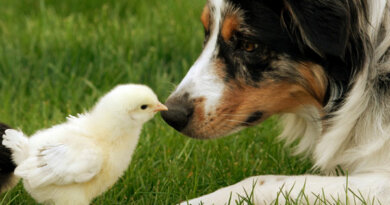Canine Quirks Linked To Genetics, Study Says

Does the sound of a plastic bag flapping in the wind frighten your dog? Do they chase their own tail or eat dirt? Do they chase squirrels? Why do they do that?
Dogs are quirky in their own ways. These odd behaviors are a big part of them that we don’t sometimes understand. A study says that there might be genetic variants contributing to it.
DNA sequences from more than 4,000 dogs, including domestic and wild dogs, were paired with 46,000 responses to these and other questions in a study to identify genetic variations connected to typical dog behaviors.
“There are about 350 dog breeds recognized in the world, and each one is a different story,” says geneticist Elaine Ostrander at the US National Human Genome Research Institute in Bethesda, Maryland, and an author of the study, which was published on 8 December. “You can’t just group them together like you can humans.”
Every one of their distinctive histories has left its mark on particular breeds’ genes. Others may have been affected in a different way. For instance, during times of war or famine when there was not enough food to feed them, the populations of several large dog breeds declined sharply. Breeders might then combine several canine lineages in an effort to reintroduce traits that had been lost to the remaining population.
As a result of the difficulty in tracing the genetic roots of behavioral traits due to the complexity of these stories, Ostrander and her colleagues opted to do away with traditional breed classifications and utilize DNA sequences to divide dogs into genetic lineages.
The scientists examined the DNA of roughly 4,300 canines, 2,800 of which were purebreds representing 226 recognized breeds. Ten separate lineages were produced by the method, which also includes DNA from mixed-breed dogs, semi-feral dogs, and wild dogs from four continents.
From there, Ostrander and her colleagues used the behavioral surveys completed by the owners of more than 46,000 purebred dogs to correlate behavioral features with ancestry. For instance, members of the terrier lineage tended to be aggressive and predatory toward other dogs, whereas toy dogs tended to feel uneasy.
A number of variations connected with the development of the nervous system were found after an examination of DNA sequences linked to those behaviors. For instance, variations found in sheepdogs, which were bred for their herding abilities, identified a molecular pathway involved in the forming of connections of nerve cells.
According to geneticist Elinor Karlsson of the University of Massachusetts Chan Medical School in Worcester, the findings represent a fascinating advancement in our understanding of the connections between canine lineages.
Karlsson presented data earlier this year demonstrating that breed is a poor indicator of a particular dog’s behavior.
“At the end of the day, dogs and humans are probably more similar to each other than they are different, if you look at the whole spectrum of animal evolution,” says Karlsson. “We can totally understand each other for most things.”




